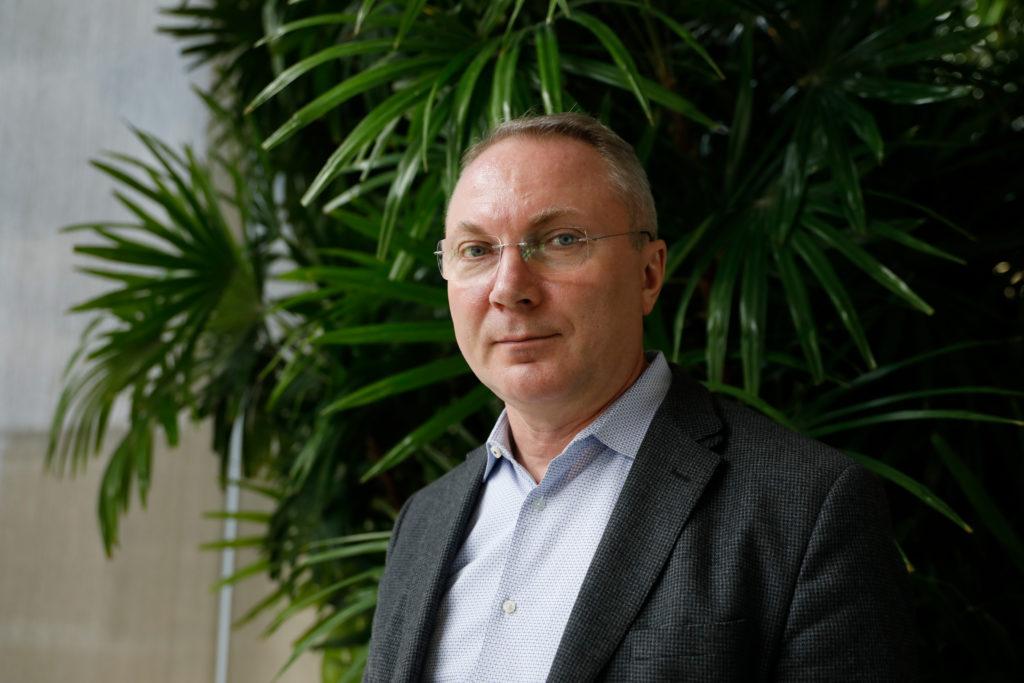Updated: Nov. 23, 2019 at 3:06 p.m.
Five years after it was formed, the biomedical engineering department aims to expand its faculty and offerings to become more competitive with other similar departments nationally.
In the past half decade, the department’s faculty count has nearly doubled, and faculty have increased the number of courses offered to students and the department’s research output. Faculty said the department’s mission is to improve public health outcomes through their research and to foster interest among students in the field to reach parity with peer departments at other universities.
“Job opportunities in biomedical engineering, our mission to engineer better health and the exciting science of biomedical innovation are attractive forces which will drive excitement among students, faculty and GW administration to grow this program,” Igor Efimov, the department chair, said in an email.
Efimov added that more than 200 undergraduate students and about 50 graduate students are currently pursuing degrees in the department, which is housed in the School of Engineering and Applied Science, as the number of faculty in the department has grown.
Efimov said the department’s curriculum has changed “dramatically” in the last five years as those faculty bring expertise in several specializations to the department, allowing the department to increase its number of core curriculum courses and electives to 20 courses, according to the University bulletin. Efimov said these classes focus on subjects like robotics, tissue engineering and medical devices.
“New faculty members offered new courses and new directions of biomedical engineering not offered before,” he said.
He added that faculty received more grants last academic year than any previous year in the department’s history, and faculty have been awarded with more than $20 million in grants this year. Efimov said these grants have funded several research projects that department faculty are currently working on centered on issues like cancer therapeutics, robotics and cardiovascular disease.
University President Thomas LeBlanc has made improving the University’s research endeavors one of his main goals during his tenure and intends to increase the ratio of undergraduates majoring in STEM from 19 to 30 percent over the next five years.
Efimov said similarly focused academic departments nationwide include about 20 members, nine more than his department. He added that the department’s offerings and enrollment will continue to grow if officials provide greater financial support for biomedical engineering research and funding to hire more faculty.
Murray Loew, a professor of biomedical engineering and the incoming chair of the department next academic year, said the department is currently looking to hire two new faculty members, a tenure or tenure-track faculty member and a professor of the practice.
He said the department formed after breaking off from the electrical and computer engineering department, and since then, officials have added a doctorate program in biomedical engineering and regulatory biomedical engineering.
Loew said the department has a “robust and active” research program that allows students to work in laboratories in the Science and Engineering Hall along with professors on research. But he said the department lacks adequate lab and office space in SEH.
The department participates in an annual showcase hosted by SEAS for undergraduate and graduate students to compete for prizes based on engineering research, according to the department’s website.
As incoming chair of the department, Loew said he wants to see more collaboration between his department, the GW Hospital and the School of Medicine and Health Sciences to make improvements in how diseases are diagnosed.
“It’s been true synergy because they have a lot of problems, and we have a lot of potential solutions, and together, we are making real contributions,” Loew said of the partnerships. “It means that ideas we develop in the laboratory can be tried out, at least to some extent, at least in clinical setting with proper planning and preparation.”
Loew said he wants the department to take more advantage of its D.C. location through partnerships with local governmental and nongovernmental organizations because the city provides the department with an asset other universities do not have access to.
“The fact is that we are in the midst of not just government and politics but a rich scientific environment research laboratory – the National Institutes of Health, NASA Goddard [Space Flight Center], Children’s [National] Hospital and a number of other organizations are literally in our backyard – and we are working hard to develop and strengthen relationships with them,” he said.
He said the department already has a partnership with the Food and Drug Administration and wants to create similar ties with other local organizations. He added that many students in the department have taken advantage of these organizations’ job and internship opportunities set up through the partnership.
Jason Zara, an associate professor of biomedical engineering, said the curriculum over the past five years has changed to allow students the flexibility to pick areas of focus for their study, like biomechanics and imaging.
He said the department’s “inherently interdisciplinary” research allows it to more easily collaborate with other similar fields because the department combines two major academic fields in engineering and medicine.
“The future of the department is very bright as it grows and expands further,” Zara said.
This post has been updated to reflect the following corrections:
The Hatchet incorrectly reported that the biomedical engineering department added bachelor’s, master’s and doctorate degrees after splitting from the electrical and computer engineering department. The department already offered the bachelor’s and master’s degrees before the split and added a doctorate degree only. We regret this error.







